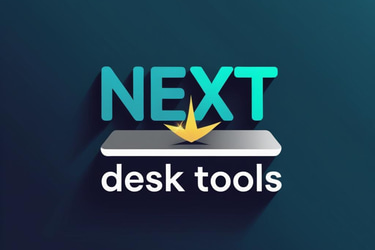Why AI Literacy Is the New Everyday Office Skill
AI is now part of everyday office tools. This blog explains why AI literacy matters, how to use it safely and effectively, and simple ways to build confidence using AI at work.
10/23/20253 min read


If AI still sounds like something for tech teams or engineers, you are not alone.
But here is the truth — AI is already part of your workday, even if you do not notice it.
From email suggestions and meeting recaps to presentation builders and chat assistants, AI is now built into the tools you already use.
So learning to use it confidently is not a tech upgrade — it is the next basic office skill.
AI literacy is not about coding or algorithms.
It is about knowing how to work smarter with the tools at your fingertips — safely, clearly, and with purpose.
Why It Matters Right Now
Work faster and reduce stress. AI can summarize, organize, and polish in seconds. Teams that use it well move quicker.
Improve quality with less rework. Knowing what to ask and how to check makes AI a helpful partner.
Stay safe and compliant. A little AI awareness helps protect private or sensitive information.
Build future-ready skills. People who use AI to support their work stay valuable and adaptable.
What AI Literacy Looks Like in Real Life
1. Knowing Where AI Can Help
AI is great at:
Repetitive administrative work such as summarizing meetings, drafting emails, or cleaning data.
Brainstorming ideas such as headlines, outlines, or formatting slides.
Quick analysis such as finding trends or organizing information.
2. Knowing Its Boundaries
AI is smart, but it is not perfect.
It can sound right and still be wrong.
It does not understand your office culture or tone.
It cannot handle confidential information, so keep private data out of public tools.
3. Talking to AI Clearly
Prompting is simply giving clear directions.
Tell it what you need, what tone or format to use, and any background details.
The clearer your request, the better your result.
4. Checking Its Work
AI helps you go faster, not skip thinking.
Always review for names, numbers, and context.
You are still the decision maker.
A Five-Minute Workflow That Works
Start with the goal. For example, "I need a five-bullet summary of today’s meeting for the executive team."
Use a trusted tool such as Copilot or Gemini that your organization approves.
Give context. For example, "Summarize these notes into five bullets with one action item per person."
Check for gaps. Are any details missing or off-tone?
Refine and finalize. Ask AI to shorten, adjust tone, or clarify points, then review before sending.
Everyday Prompts to Try
Email cleanup
"Rewrite this email so it is friendly, clear, and under three sentences. Keep all key details."Meeting summary
"From these notes, create five key points, three decisions, and three next steps. Include who is responsible."Data to story
"Turn this sales table into a short summary explaining what changed this month."Quick quality check
"List five things I should double-check before I send this draft, including numbers, privacy, and tone."
Common Hesitations and the Truth Behind Them
Will AI take my job
Use it to handle routine work so you can focus on problem-solving, people, and creativity — the things AI cannot do.I do not want to make a mistake
Start with safe, approved tools and avoid sharing private information. You will be fine.I am not techy enough
You do not have to be. Start small. Pick one task — let AI help you write, summarize, or organize — and build from there.
Small Wins Build Confidence
Try these quick steps this week:
Spend 20 to 30 minutes testing one AI feature such as a meeting recap or email draft.
Use five prompts from the 100 Plus Everyday AI Prompts Cheat Sheet and add your own details.
Add a simple fact-check step before sharing AI-generated work.
Share one AI tip with a coworker to reinforce your learning.
Note one improvement in time or quality to measure your progress.
How Teams Can Build AI Confidence Together
Keep a human-in-the-loop rule so every AI output gets reviewed before sharing.
Create a shared prompt library for repeatable tasks such as reports or onboarding slides.
Host a short prompt swap session where coworkers share what worked.
Develop a simple AI policy so everyone knows what data is safe to use.
Your Next Step
AI literacy is not a buzzword. It is a practical skill that helps you save time and show up at your best.
Start small. Pick one routine task, such as summarizing notes or drafting an email, and let AI assist you.
Then compare how long it takes before and after.
You might be surprised at how much time you win back.
Ready to Get Comfortable with AI
Download the 100 Plus Everyday AI Prompts Cheat Sheet.
It is your quick-start guide to using AI confidently in daily office tasks.
No jargon, no pressure — just real-world results.
Get the Cheat Sheet
(Note: Written with a little AI help—and plenty of human judgment.)
